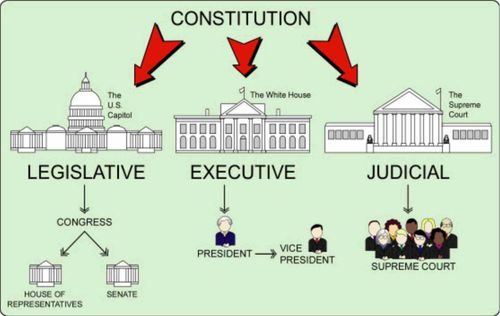
Indian Constitution And Division of Power in India
An essential characteristic of a federal structure is the distribution of powers between the Centre and the States. While Schedule VII of the Constitution of India consists of the following three lists that deal with the division of powers between the Centre and the States, Article 246 states that the powers between the Centre and the states is divided into the three lists – Union List, State List and Concurrent List.
- Union List (List I) – consists of 97 items on which centre alone can legislate
- State List (List II) – consists of 66 items on which State can legislate. However this power is not exclusive to the state as centre can also legislate on items in the list under the following circumstances.
- Article 249 – Rajya Sabha can empower the Centre to legislate on a state subject by passing a resolution declaring the subject is expedient in national interest.
- Article 250 – When National emergency is proclaimed, Parliament can legislate on any item in the state list during that period.
- Article 252 – When two or more states pass a resolution in their respective assemblies empowering the Centre to legislate on a specific item in the State list then the Centre can legislate on that item for the concerned states.
- Article 253 – When an international convention or treaty has to be implemented.
- Article 356 – When President’s Rule is imposed in a particular state.
Also in case of a conflict between the Central and the State law on a subject in the state list, the Central law will prevail over the state law.
iii. Concurrent List (List III) – consists of 47 subjects on which both the Centre and the State can legislate. In case of a conflict between the central law and the state law on a subject in the Concurrent List then the Central law will prevail. The only exception to this is that if the state law is assented by the President, then it shall prevail over the Central Law.
Thus, though the Constitution of India provides for division of powers between the Central Government and the State Government, the Central Government has more power than the State Government as it can legislate on the Central List, Concurrent List and the State List under certain special circumstances.
Residuary powers (Article 248) vested in the Centre
Residuary powers include those subjects that are not covered under any of the three lists mentioned in Schedule VII of the Constitution. Unlike other federations like the United States where the Residuary powers are vested in the States, the Residuary powers in India are vested in the Centre.












